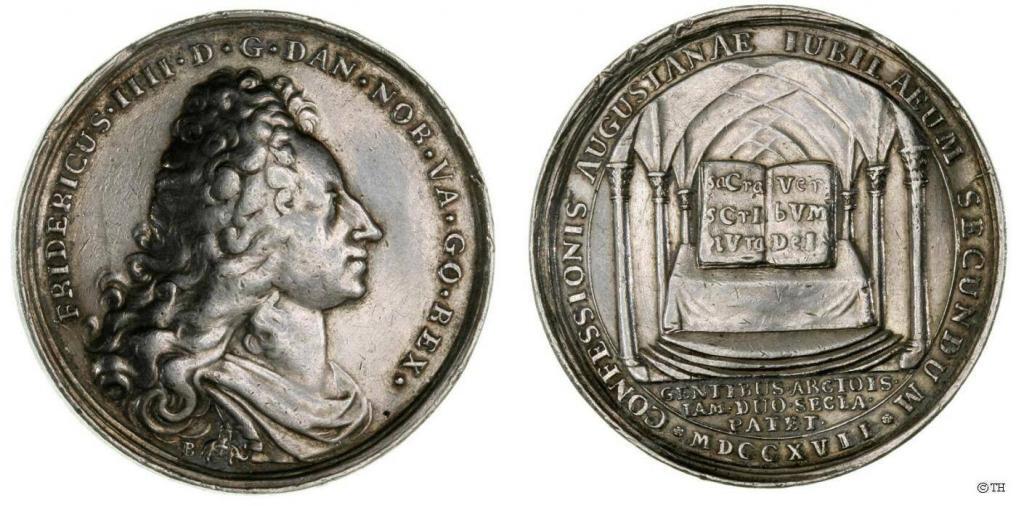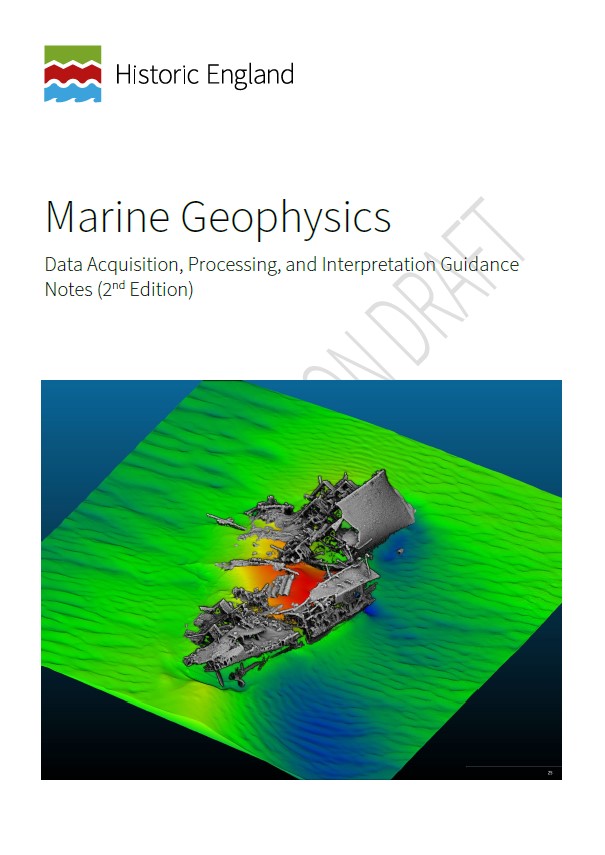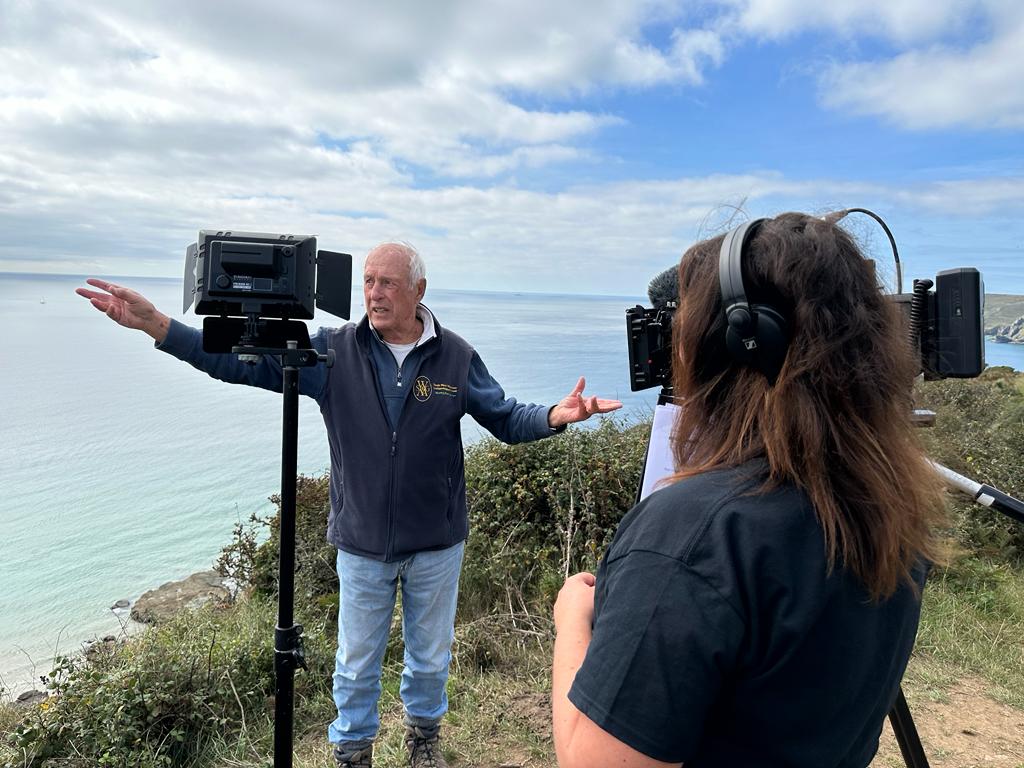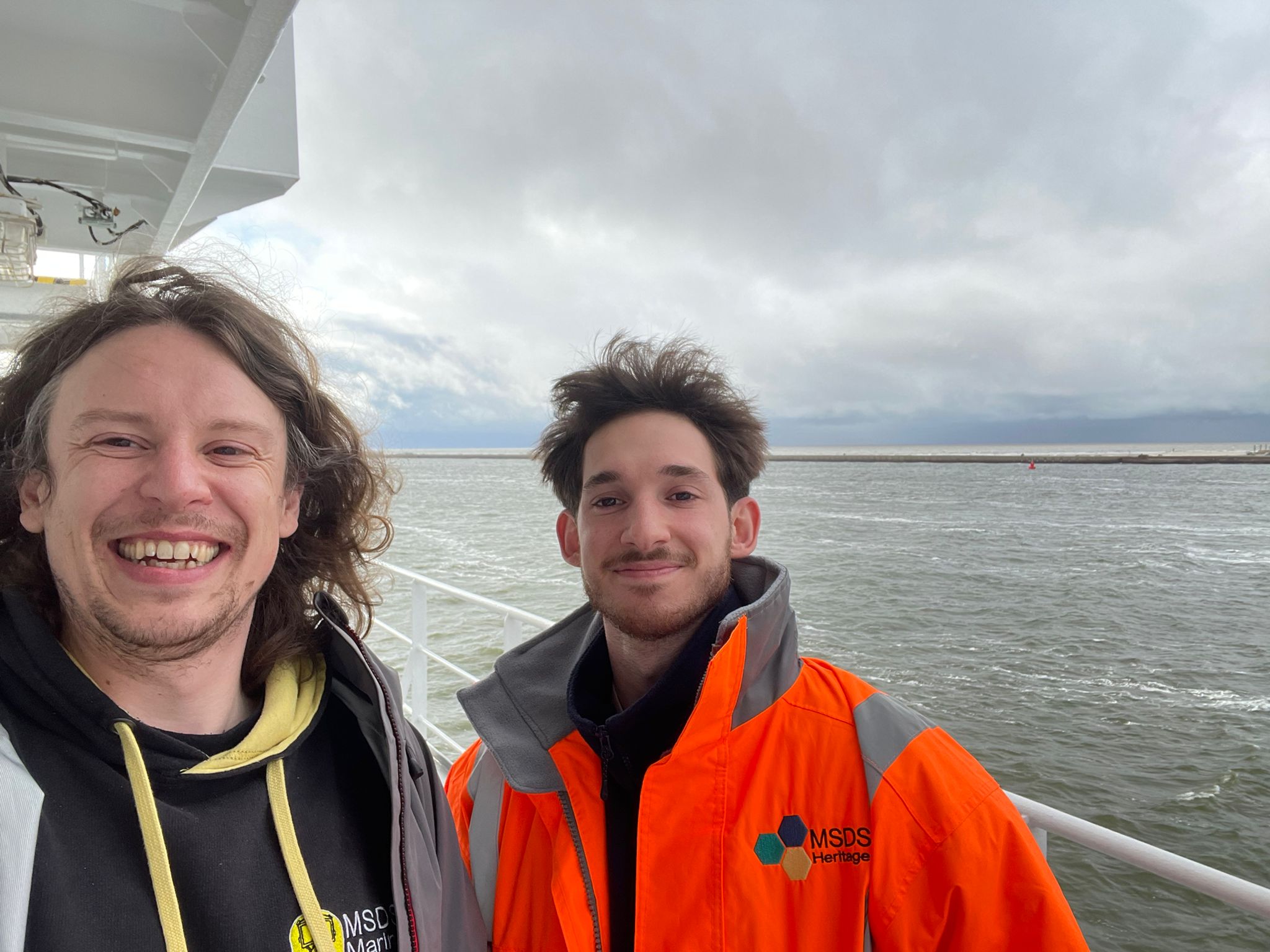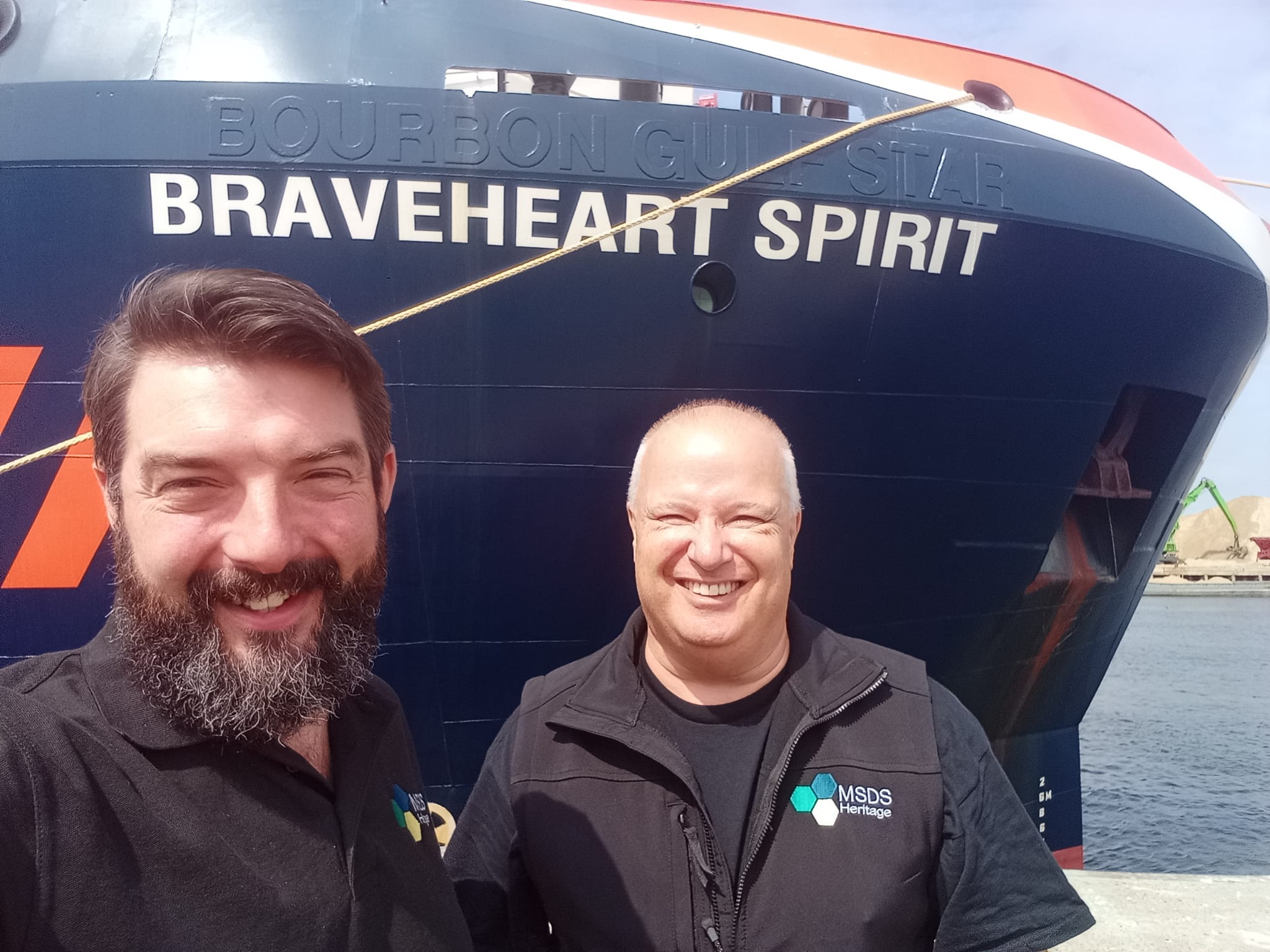In the first of a new blog series relating to the Rooswijk, Alex Bliss (MSDS Marine Project Officer), gives an update on an artefact discovered during the post excavation work.
Hello, and welcome to the first of a new series of blog posts concerning finds from the Rooswijk 1740 project!
This week’s object was recently discovered by the lab team during conservation. Thought originally to be several coins stuck together by marine concretions, we were surprised to discover that it is in fact a rather impressive badge or similar dress-accessory (Fig. 1). This item is extremely unusual, as it has been manufactured from two re-used artefacts that pre-date the Rooswijk by approximately twenty years.
Figure 1: Rooswijk artefact RK17 A00746
The front of the object is made from a silver commemorative medal dated 1717, issued under Frederick IV of Denmark and Norway. This medal was struck to celebrate the 200-year anniversary of the Protestant Reformation, as begun by Martin Luther in 1517. A better-preserved medal showing the full details on both faces can be seen below (Fig. 2).
Figure 2: A better preserved example of the medal.
Soldered to one face of the medal is a short connecting shank, to which in turn has been attached a small, silver coin of unknown denomination and origin. This feature effectively turns the medal into a badge, thus allowing it to be affixed to an item of clothing – possibly worn through a buttonhole. One interesting observation to be made concerning this object is that the obverse (heads) side of the medal is displayed outwards, perhaps suggesting that this item was intended to represent a symbol of loyalty towards Frederick himself by a loyal subject. The utilisation of medals or touch-pieces to profess devotion to a monarch is a concept well attested to in later 17th and early 18th century Europe, but it is quite rare to see them converted in this manner.
So, who would have owned such an item aboard the Rooswijk? This is a very difficult question to answer. Although the medal itself is an official issue and very much a ‘high end’ item, the addition of the shank and coin to turn it into a badge is very much a customised feature. From previous research undertaken, we know that two of the twenty crewmen currently identified to have sailed on Rooswijk hailed from Scandinavia (Norway and Sweden). We do not know if there were passengers on board the ship. If so, they may have brought the item with them, because the object looks like it was owned by someone of higher status travelling out to Batavia.
We hope you have found this short piece informative, and look forward greatly to releasing further writings about other Rooswijk artefacts over the coming weeks and months!
About the Rooswijk Project:
The Rooswijk was a Dutch East India Company vessel which sank on the treacherous Goodwin Sands, off Kent, in January 1740. The ship was outward-bound for Batavia (modern-day Jakarta) with trade goods. The site is now protected by the Protection of Wrecks Act 1973 and all access is controlled by a licensing system administered by Historic England on behalf of the Department for Digital, Culture, Media and Sport. The ship’s remains lie at a depth of some 25 metres and are owned by the Dutch Government. The UK government is responsible for managing shipwrecks in British waters, therefore both countries work closely together to manage and protect the wreck site. The Cultural Heritage Agency of the Netherlands, RCE, (on behalf of the Ministry of Education, Science and Culture) and Historic England (on behalf of the Department of Digital, Culture, Media and Sport) are responsible for the joint management of the Rooswijk.
An archaeological survey of the site in 2016, undertaken by RCE and Historic England, showed that the wreck site was at high risk. As a result, a two-year excavation project began in 2017. Wrecks such as the Rooswijk are part of the shared cultural maritime heritage across Europe and it’s important that cultural heritage agencies are able to work together to ensure that sites like this are protected, researched, understood and appreciated by all. The project involves an international team led by RCE in partnership with Historic England. MSDS Marine are the UK Project Managers for the project.


